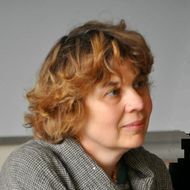- A
- A
- A
- ABC
- ABC
- ABC
- А
- А
- А
- А
- А
- HSE University
- Faculties
- Faculty of Humanities
- School of Linguistics
- News
- Presentation by Ekaterina Rakhilina and Tatyana Reznikova: Linguistics of Physical Properties
The School of Linguistics was founded in December 2014. Today, the School offers undergraduate and graduate programs in theoretical and computational linguistics. Linguistics as it is taught and researched at the School does not simply involve mastering foreign languages. Rather, it is the science of language and the methods of its modeling. Research groups in the School of Linguistics study typology, socio-linguistics and areal linguistics, corpus linguistics and lexicography, ancient languages and the history of languages. The School is also developing linguistic technologies and electronic resources: corpora, training simulators, dictionaries, thesauruses, and tools for digital storage and processing of written texts.
Digital Humanities
Bangkok: Association for Computational Linguistics, 2024.
In press
Kolmogorova A., Куликова Е. Р., Лобанов В. В.
Supercomputing Frontiers and Innovations. 2025. No. 3.
In bk.: BivalTyp: Typological database of bivalent verbs and their encoding frames. .
arxiv.org. Computer Science. Cornell University, 2024

Presentation by Ekaterina Rakhilina and Tatyana Reznikova: Linguistics of Physical Properties
On March 3, Ekaterina Rakhilina and Tatyana Reznikova presented their report Linguistics of Physical Properties at the Academy of Sciences Institute of Slavic Studies. The report combined the results of several years of studies carried out by the researchers of the School of Linguistics at the Higher School of Economics.
The current research focuses on lexical typology of property terms such as sharp, wet, old, soft, smooth, etc. The goal is to find out how these meanings are expressed in the world languages, and in particular, which properties are commonly presented in one word, and which are more often presented by different lexemes.
- About
- About
- Key Figures & Facts
- Sustainability at HSE University
- Faculties & Departments
- International Partnerships
- Faculty & Staff
- HSE Buildings
- HSE University for Persons with Disabilities
- Public Enquiries
- Studies
- Admissions
- Programme Catalogue
- Undergraduate
- Graduate
- Exchange Programmes
- Summer Schools
- Semester in Moscow
- Business Internship
- © HSE University 1993–2025 Contacts Copyright Privacy Policy Site Map
- Edit

